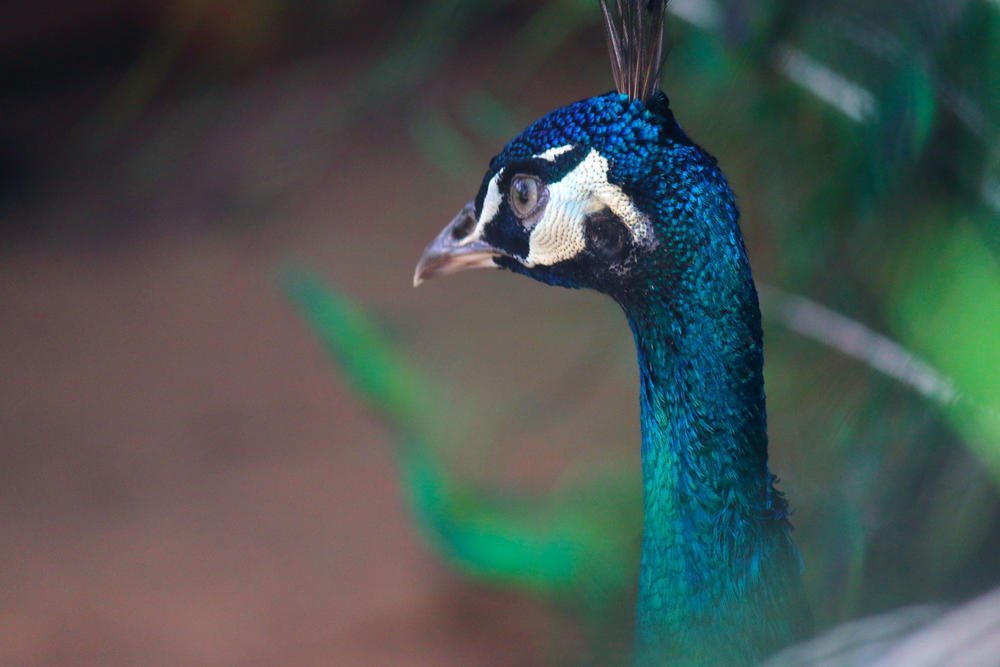Section Branding
Header Content
In Search Of Flannery O'Connor's Peacocks
Primary Content
Once you turn onto the dirt road leading up to Andalusia, it’s easy to forget that you’re in a college town and not a rural 1950s farmland.
Flannery O’Connor’s historic home appears almost exactly as it did when she lived in Milledgeville, with a notable exception: the writer’s famous aviary, which once housed more than 40 peacocks, has been whittled down to just two of the colorful birds and moved to the opposite end of the backyard.
This month, researchers broke ground on an archaeological dig at Andalusia, hoping to find the exact location of O’Connor’s peacock pens.Archaeology In Search Of Flannery O'Connor's Peacocks
Matt Davis, director of historic museums at Georgia College and State University, said the excavation will illuminate more about O’Connor’s life and allow curators to recreate the property as it appeared when she lived there. Georgia College, O’Connor’s alma mater, received Andalusia as a gift in 2017 and have operated the museum ever since.
“We hope for that portion of the dig to better map the location of (the aviary) and find any artifacts that are associated with that site, so we can better understand how that fit into the framework of the farm and O’Connor’s life there,” Davis said.
Already, archaeologists have found nails, ceramics, glass, pieces of porcelain, bits of brick and other artifacts -- evidence, Davis said, that the aviary stood in that area.
Primary documents indicated that O’Connor’s aviary may have been located near the Nail House, her parking garage and storage building behind her home. The original building was torn down after O’Connor died in 1964, but the artifacts revealed during this excavation will help paint a clearer picture of it as well as the aviary.
“Birds were kind of her hobby and her fascination, but peafowls held a special place in her heart,” Davis said. “They’ve become a kind of symbol very much associated with O’Connor. Anytime you really see any pictographic drawings or illustrations associated with Flannery O’Connor, usually peafowls are not far behind.”
Davis said the results of the dig will inform a full restoration of the property within five to seven years.
The excavation shed light on more than the location of the peacock pens. Meghan Anderson, museum curator at Andalusia, said some of the recovered items likely formed the floorboards of the Nail House.
“We’re finding, oddly enough, lots of nails — it’s called the Nail House — lots of nails, lots of fishing weights, things like that,” Anderson said ironically. “So it’s really just helping us dig up some artifacts that were lost when the original structure was torn down.”
Andalusia opened the site to the public for O’Connor fans to come watch the dig, meet the research teams and take the museum tour.
Margaret Whitt, a retired university professor who lectured on O’Connor, traveled from western North Carolina to spend a few minutes on the property. She said that for more than 35 years, she took trip after trip to Milledgeville from where she taught in Denver, college students in tow.
This time, however, the visit is for herself.
“A person ought to visit the home of his or her favorite writer, because you need to hear the same silences that person heard,” she said. “I came today in search of the silences that O'Connor heard.”
O’Connor anthology in hand, Whitt left the tour halfway through and made her way to the front porch to read A Good Man Is Hard To Find aloud.
She said it was O’Connor’s unique voice that made her stand out among other Southern writers.
“You know, arguably, she's the most orthodox Christian writer of the twentieth century. At the same time, she's funny. She's bizarre. She's violent,” Whitt said. “I think there's nobody who ever had me — you know, 4,000 students, I guess, over the years — that doesn't remember my affection for Flannery O'Connor.”

